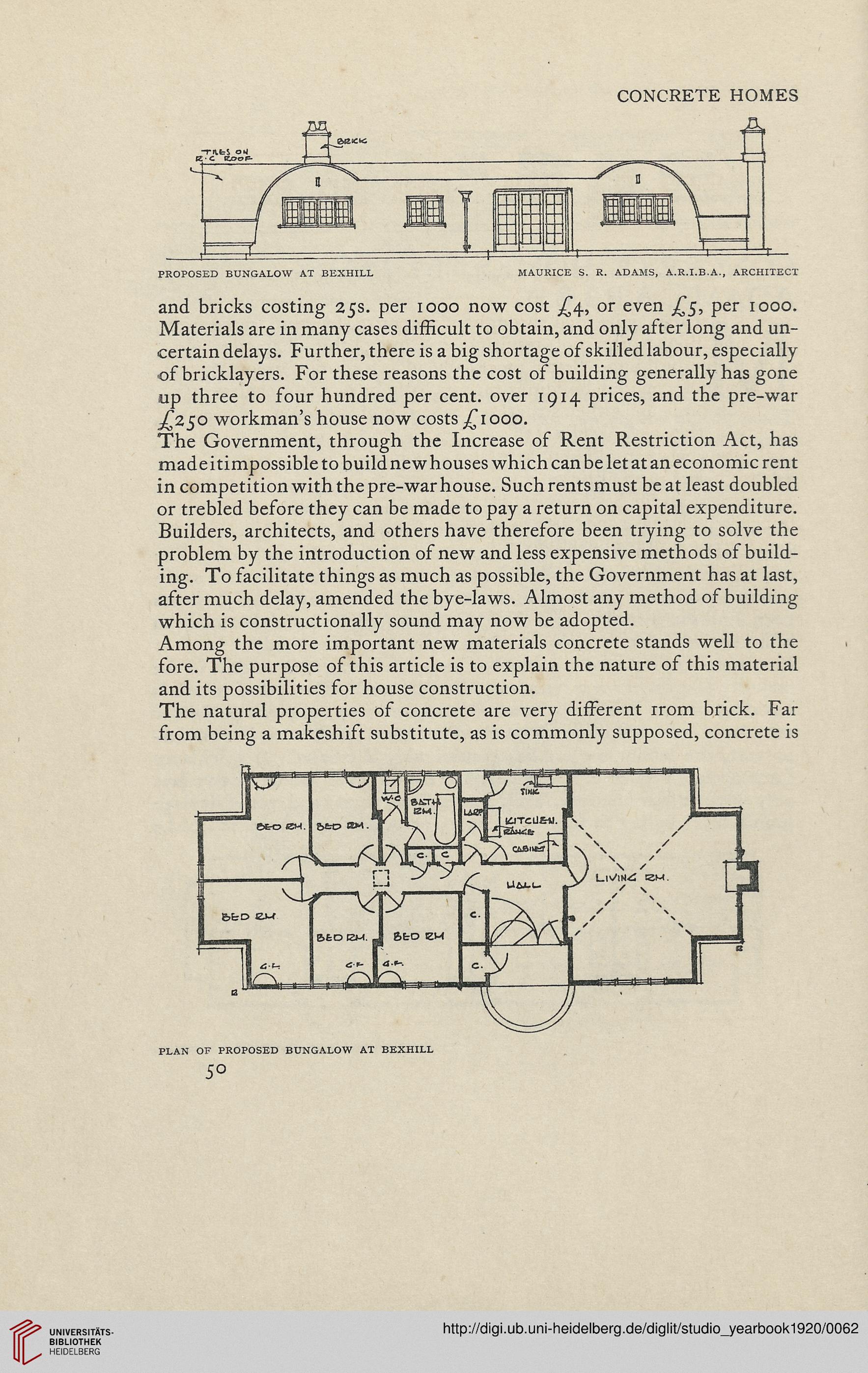CONCRETE HOMES
and bricks costing 25s. per 1000 now cost £4, or even £5, per 1000.
Materials are in many cases difficult to obtain, and only after long and un-
certain delays. F urther, there is a big shortage of skilled labour, especially
■of bricklayers. For these reasons the cost of building generally has gone
up three to four hundred per cent, over 1914 prices, and the pre-war
^250 workman’s house now costs jT 1000.
The Government, through the Increase of Rent Restriction Act, has
made itimpossible to build new houses which can be let at an economic rent
in competition with the pre-war house. Such rents must be at least doubled
or trebled before they can be made to pay a return on capital expenditure.
Builders, architects, and others have therefore been trying to solve the
problem by the introduction of new and less expensive methods of build-
ing. To facilitate things as much as possible, the Government has at last,
after much delay, amended the bye-laws. Almost any method of building
which is constructionally sound may now be adopted.
Among the more important new materials concrete stands well to the
fore. The purpose of this article is to explain the nature of this material
and its possibilities for house construction.
The natural properties of concrete are very different rrom brick. Far
from being a makeshift substitute, as is commonly supposed, concrete is
5°
and bricks costing 25s. per 1000 now cost £4, or even £5, per 1000.
Materials are in many cases difficult to obtain, and only after long and un-
certain delays. F urther, there is a big shortage of skilled labour, especially
■of bricklayers. For these reasons the cost of building generally has gone
up three to four hundred per cent, over 1914 prices, and the pre-war
^250 workman’s house now costs jT 1000.
The Government, through the Increase of Rent Restriction Act, has
made itimpossible to build new houses which can be let at an economic rent
in competition with the pre-war house. Such rents must be at least doubled
or trebled before they can be made to pay a return on capital expenditure.
Builders, architects, and others have therefore been trying to solve the
problem by the introduction of new and less expensive methods of build-
ing. To facilitate things as much as possible, the Government has at last,
after much delay, amended the bye-laws. Almost any method of building
which is constructionally sound may now be adopted.
Among the more important new materials concrete stands well to the
fore. The purpose of this article is to explain the nature of this material
and its possibilities for house construction.
The natural properties of concrete are very different rrom brick. Far
from being a makeshift substitute, as is commonly supposed, concrete is
5°




